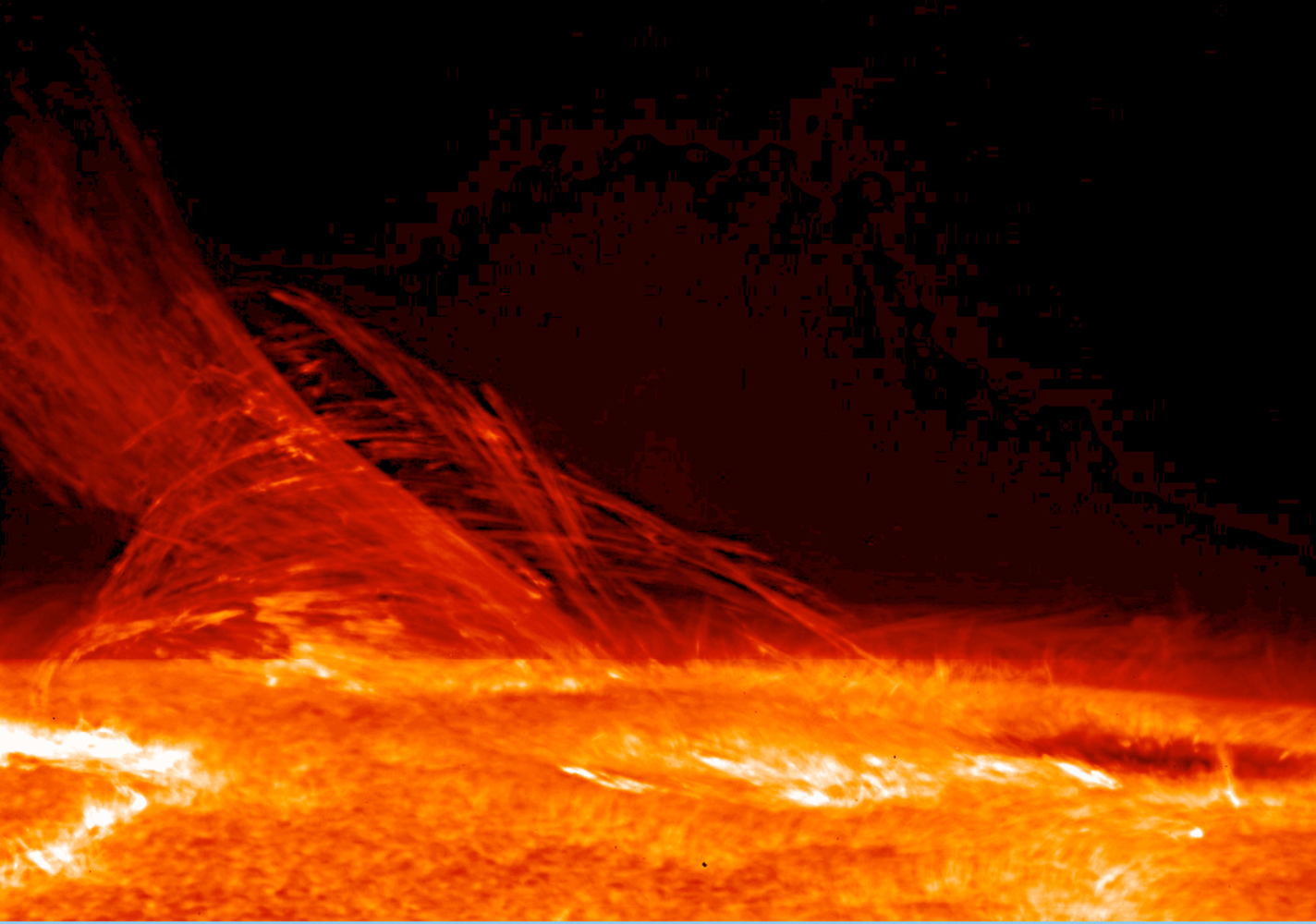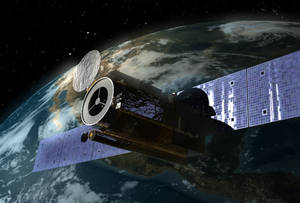The Science of the Sun
Interview with
Ben - There were a number of discussions on Solar Physics during this year's National Astronomy Meeting, so I met up with Lucie Green, from University College London, to find out what it is that's so interesting about our nearest star.
Lucie - There are lots of interesting aspects to studying the sun. On the one hand, it's our local star so it has a very big impact on us here on earth, and we're interested in studying how exactly it impacts us. But on the other hand, it's interesting as an astrophysical object in its own right and in many cases, when we study the sun, we actually take that understanding and then apply it to other areas of astrophysics.
 Ben - So what are the things that we're trying to learn from it?
Ben - So what are the things that we're trying to learn from it?
Lucie - One of the things that we're most interested in is understanding how the magnetic field of the sun changes. So, the earth has a very strong magnetic field but the sun has a much stronger and much more interesting magnetic field, and that in fact, it governs much of the activity that happens in the sun. For example, the work that I'm interested in is looking at how the magnetic field in the atmosphere of the sun evolves and how it leads to big explosions that we call solar flares and eruptions of magnetic field which we called coronal mass ejections.
Ben - And what can studying our closest star tell us about other stars? Do we think it's fairly typical?
Lucie - We do think it's fairly typical. But actually, when you think about other stars, it could be that our sun is fairly boring. The sun is fairly small really when you compare it to other stars and the activity which happens, these explosions and eruptions, even though it's really interesting to solar scientists and people on earth, it kind of pales in comparison to maybe explosions that happen on other stars. But it still is a good benchmark because we can study the sun in detail, we can resolve the surface. We have lots and lots of light of all different wavelengths to play with, and we can learn a lot. One interesting piece of research that has happened recently has taken a model of coronal mass ejections, so these eruptions of magnetic field from the sun's atmosphere and has applied it to jets which are seen coming from the accretion discs of black holes, and that's a really nice transfer of understanding. So we can look at the coronal mass ejections and we can look at the eruption, we can think about the configuration of the magnetic fields for example and then see if those models match with the observations of black holes, and in this case, they did.
 Ben - How is it actually studied? What sort of tools do we need?
Ben - How is it actually studied? What sort of tools do we need?
Lucie - We use a lot of tools when it comes to studying the sun. We can look at maps of the magnetic field at the solar surface and that's very, very important. And we can get some idea about the three-dimensional field very low down in the sun's atmosphere. But at the moment, we're not able to measure the magnetic field high up in the sun's atmosphere, and that's partly due to the fact that the gases in the sun's atmosphere are incredibly hot. So they smear out the signature of the magnetic field. But actually, a lot of the interesting stuff happens in the magnetic field high up in the atmosphere. So that's exactly where we want to get the information. So, in the absence of having a direct measurement of the magnetic field, what we can do is try and infer what's happening and we can do that by taking observations of the sun and x-ray radiation and also, extreme ultraviolet radiation. And the emission of these wavelengths actually traces out the shapes of the magnetic fields and gives us some sense of what's happening.
Ben - So going back to these enormous ejections of material from the sun, the coronal mass ejections, these have quite a big impact on technology here on earth and our satellites, but what does actually cause them?
Lucie - Well that's one of the questions I'm working on as a researcher and I think it's one of the most important questions in solar physics. So, what we're looking at is understanding how the magnetic field evolves. It all comes down to the magnetic field. The energy which is required to power these events must come from energy stored in the magnetic field. So by looking at the shapes, the configurations of the magnetic field, we can start to understand how much energy is stored, and we can also start to understand what causes the magnetic field to suddenly erupt in the first place. It must lose its equilibrium. So, the structure exists in the solar atmosphere on the time scale of maybe hours, days. We're not exactly sure, but it does exist and it's stable, and it's happening. And then something happens to cause it to erupt up and escape the huge gravitational pull of the sun and that's the moment that we're interested in understanding.
Ben - So what's the next stage for you?
Lucie - The next stage is to continue working with Hinode space craft which is a Japanese mission on which we have a UK led telescope. And what we're going to do is use a very recently discovered signature of a magnetic configuration that we call a flux rope. A flux rope is a bundle of magnetic field lines which is very good at storing energy in the solar atmosphere. And using the Hinode space craft, we can understand where these flux ropes are forming and we can look at them up until the point of eruption. So the plan is to gather a lot of case studies and put the information together to find out at what point this flux rope becomes unstable and erupts as a coronal mass ejection.
- Previous Observing Gravitational Waves
- Next Forecasting Space Weather









Comments
Add a comment